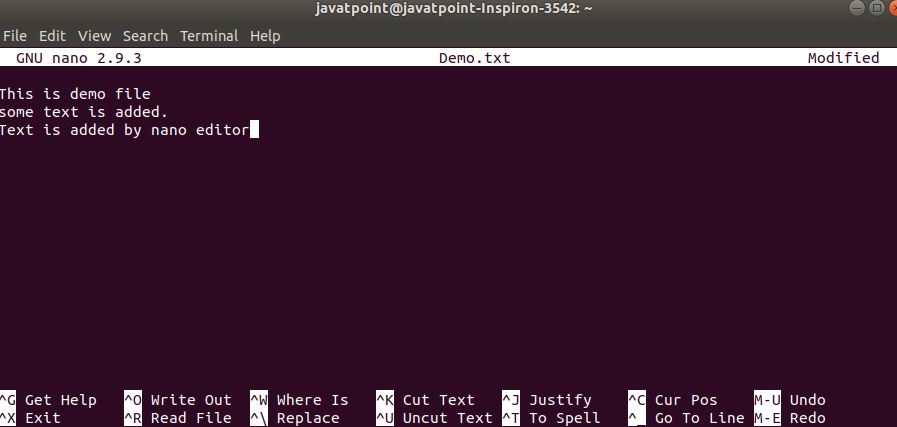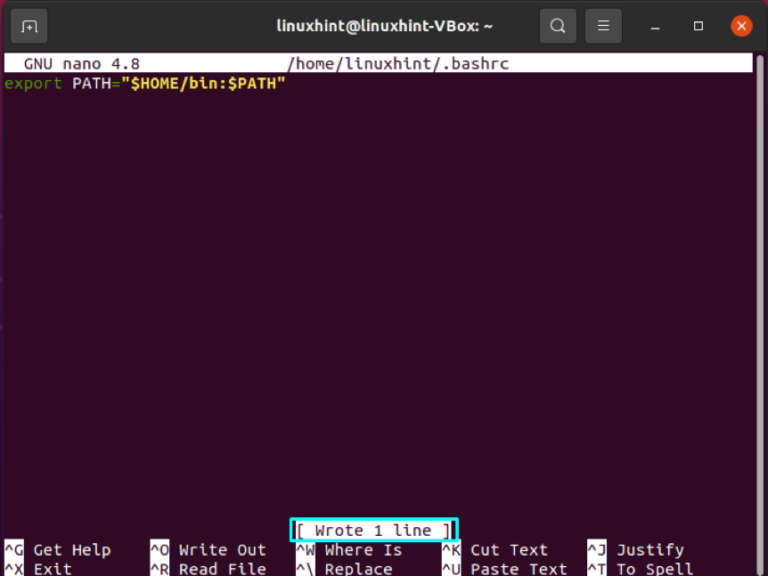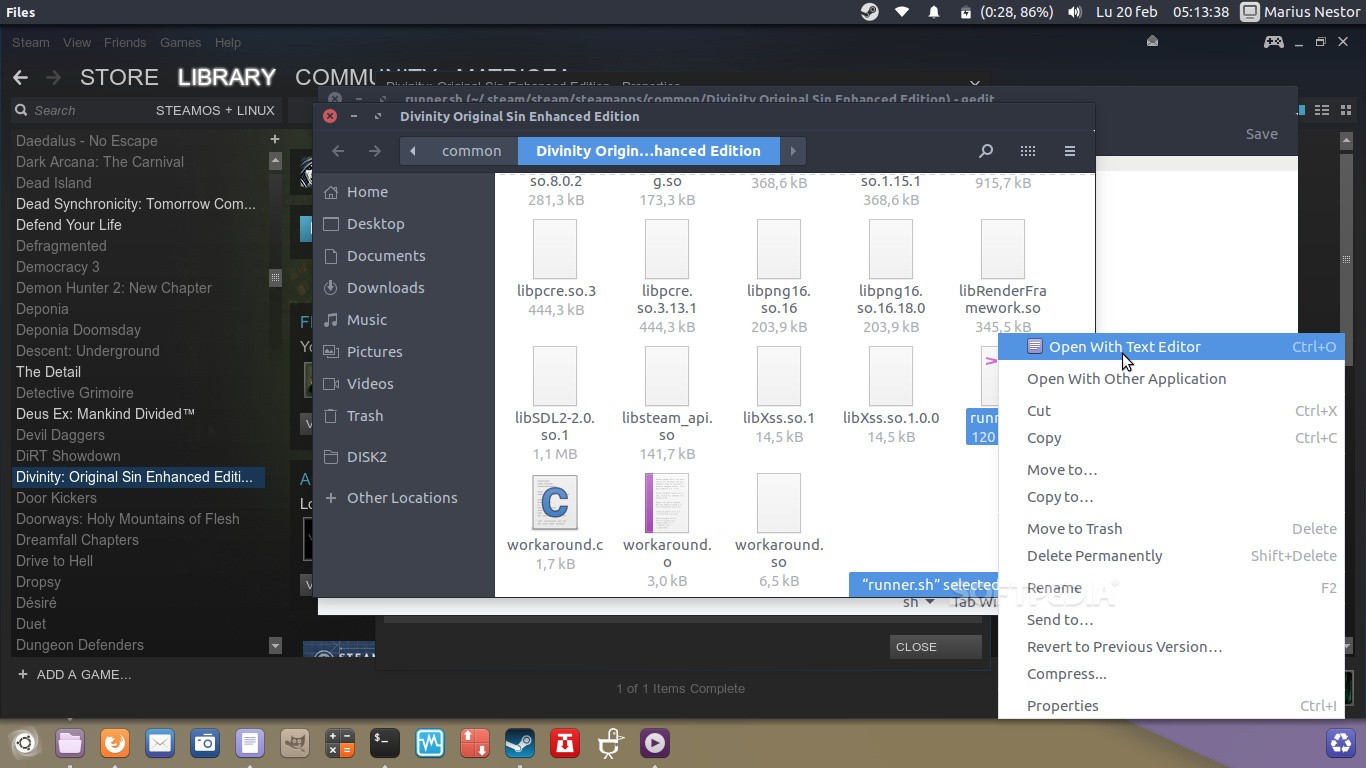

- OPEN AND EDIT TEXT FILE IN TERMINAL LINUX HOW TO
- OPEN AND EDIT TEXT FILE IN TERMINAL LINUX .EXE
- OPEN AND EDIT TEXT FILE IN TERMINAL LINUX MANUAL
- OPEN AND EDIT TEXT FILE IN TERMINAL LINUX PLUS
- OPEN AND EDIT TEXT FILE IN TERMINAL LINUX WINDOWS
Less allows you to view the contents of a file one page at a time.
OPEN AND EDIT TEXT FILE IN TERMINAL LINUX MANUAL
You can also use ZQ - choose whichever option is more convenient.Ī brief look at the other modes continues in the following pages. If you have ever read a manual page for any Linux command, then you have interacted with less. In other words, you are abandoning all changes. Pressing the colon in Normal mode switches vim to Command Line mode, and the :q! command quits (q) without saving (!). Press : (the colon key) followed by q! (i.e., :q!). This is what a new file would look like if you opened an existing file you would see the content of the file. Even though you are already in Normal mode, hit Esc just for practice's sake. To make sure you are in Normal mode, simply hit the Esc (Escape) key. If you have text, you can move around with your arrow keys or other navigation keystrokes (which you will see later). Once you have opened gedit with administrative privileges, gedit will keep those privileges until you close. You are now in Normal mode - also referred to as Command mode, because we enter commands from this mode. You would then launch gedit using the gedit command. Open a console terminal from your Linux operating system, and enter vi $ vi To do so, click Menu, then find the Terminal. After doing so, you can use one of Linux's built-in text editors to make changes to the file.
OPEN AND EDIT TEXT FILE IN TERMINAL LINUX HOW TO
The main difference from vi is that many important "normal" commands are also available in insert mode - provided you have a keyboard with enough meta keys (such as Ctrl, Alt, Windows-key, etc.).įor navigation and manipulation of text selections, this mode allows you to perform most normal commands, and a few extra commands, on selected text.įor entering editor commands - like the help commands in the third column. This wikiHow teaches you how to use the Terminal app in Linux to create a text file. This is the mode that vim will usually start in, which you can usually get back to with ESC.įor inserting new text.
OPEN AND EDIT TEXT FILE IN TERMINAL LINUX PLUS
After That Select A Program That You Want To Open Then Click Open. How Do I Open And Edit A File In Linux Terminal By pressing Control+Alt+T plus a combination of Ctrl+Alt+T, you will be able to access any configuration file.Make a note of the directory where the file is located.If you want to edit a file in nano, input that word followed by the name.Your original path and file name must be the same as the paths you would like to use for editable files.
OPEN AND EDIT TEXT FILE IN TERMINAL LINUX WINDOWS
Press Windows Logo Button + R Then Run Should Come Up. Here is a short overview of each mode available in vim: Mode Nameįor navigation and manipulation of text. exe File in Notepad Step 1: Open Notepad. (NOTE: If you ever enter a mode you are unfamiliar with, you can usually press ESC to get back to normal mode.) Opening and Closing Files You can use vi to edit any text file. You can run the following command to get. These additional modes make vim more powerful and easier to use because of this, vim users should at least be aware that they exist. Another useful text editor of Linux is Emacs that will help in editing the files using the command-line interface. Type another space and then /S, a space, and /P. Type the name of the file you’re looking for. From the Start menu, choose All ProgramsAccessoriesCommand Prompt. Vim offers more modes than the original vi (which offers only the "normal", "insert" and "command–line" modes). HOW TO SEARCH FOR FILES FROM THE DOS COMMAND PROMPT. So, for example, if you renamed "file.txt" to just "textfile" then open textfile would still open it in the default text-file editing application, as long as file textfile still thought that "textfile" was actually a text file.\( \newcommand\)
Command Purpose viPress Esc to enter Command mode, and then type :wq to write and quit the file.More Linux resources.


After That Select A Program That You Want To Open Then Click Open.
OPEN AND EDIT TEXT FILE IN TERMINAL LINUX .EXE
exe File in Notepad Step 1: Open Notepad. You can use the "file" command to reveal what the operating system thinks the file type is: file file.txt. To save a file, you must first be in Command mode. How do I run a Notepad file How to Open a. By default, this will be /Applications/TextEdit.app however, it's possible for this setting to get overridden:įinally, any file that's of the "text" type will get opened by the application bound to the text type if you just say open file.txt. The -t option means "open the file with the default application for editing text files, as determined via LaunchServices".

The -e option means "open the file argument with the TextEdit application": The -a option means "open the file argument with the named application": Here are some possible answers, all using the 'open' command-line utility.


 0 kommentar(er)
0 kommentar(er)
